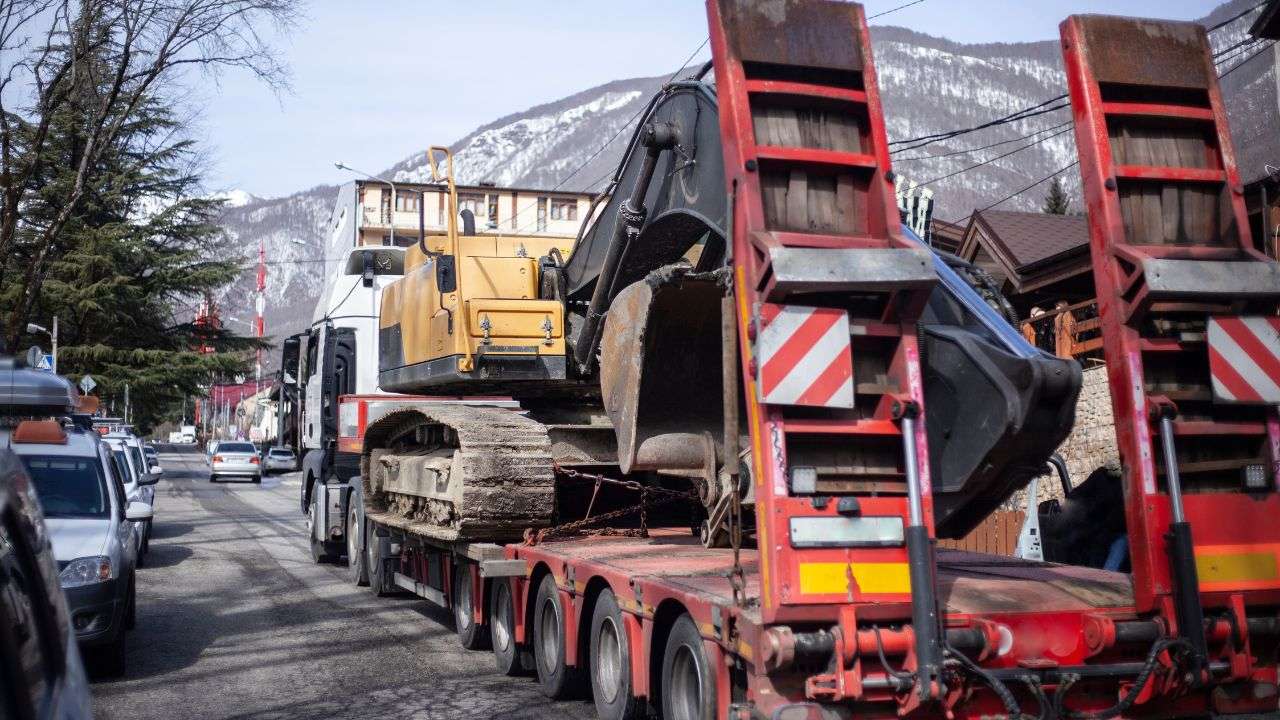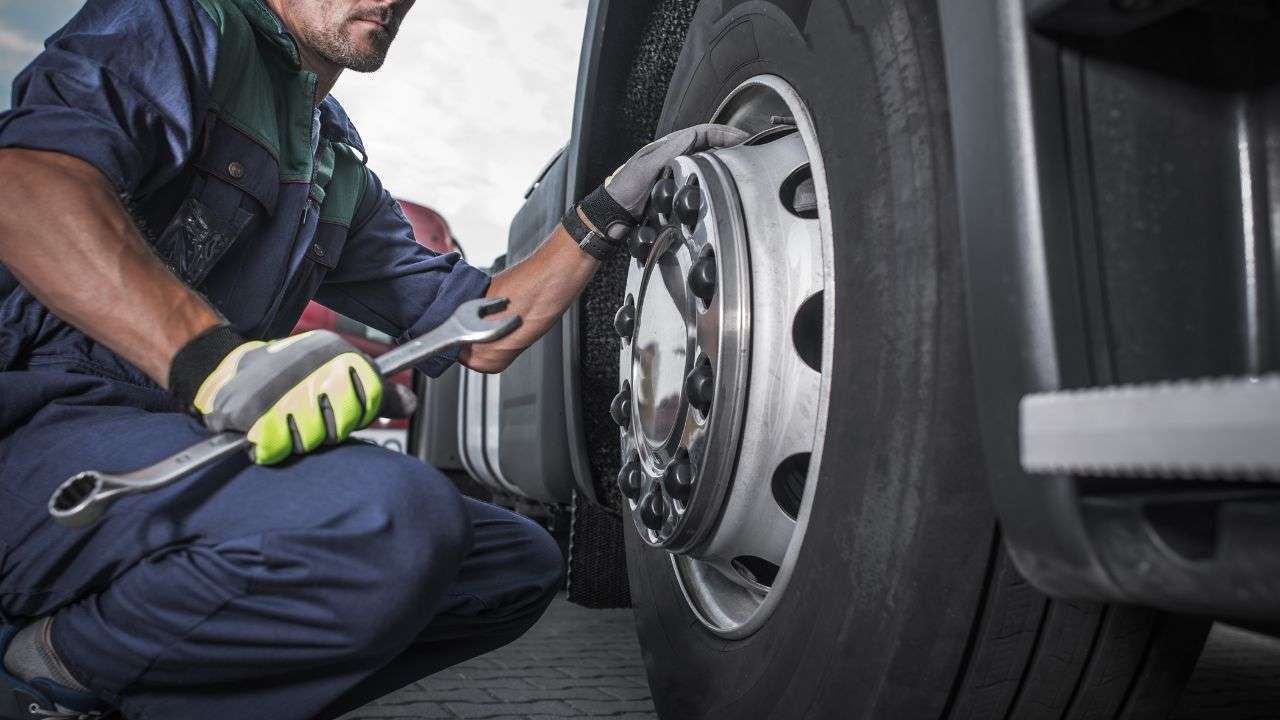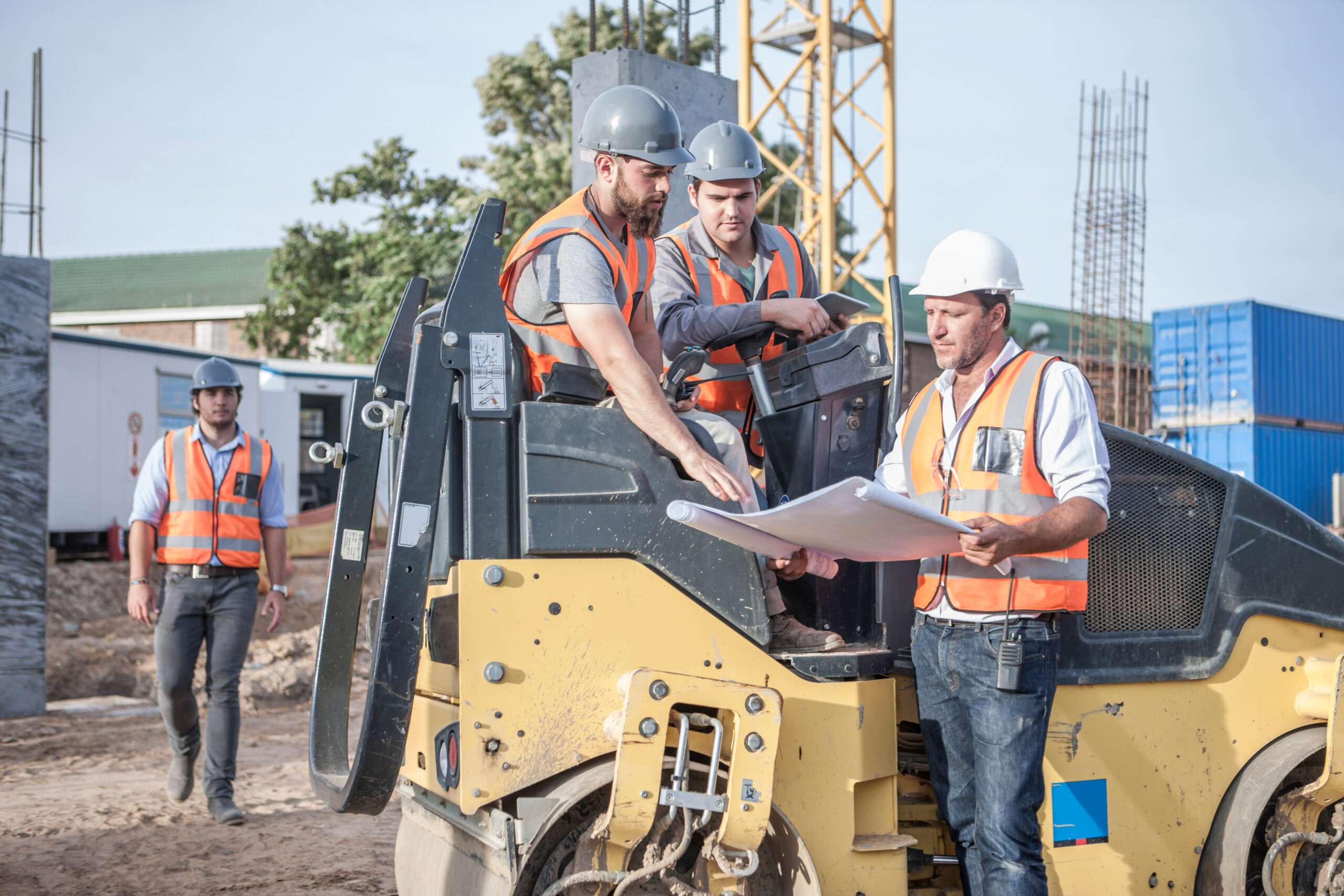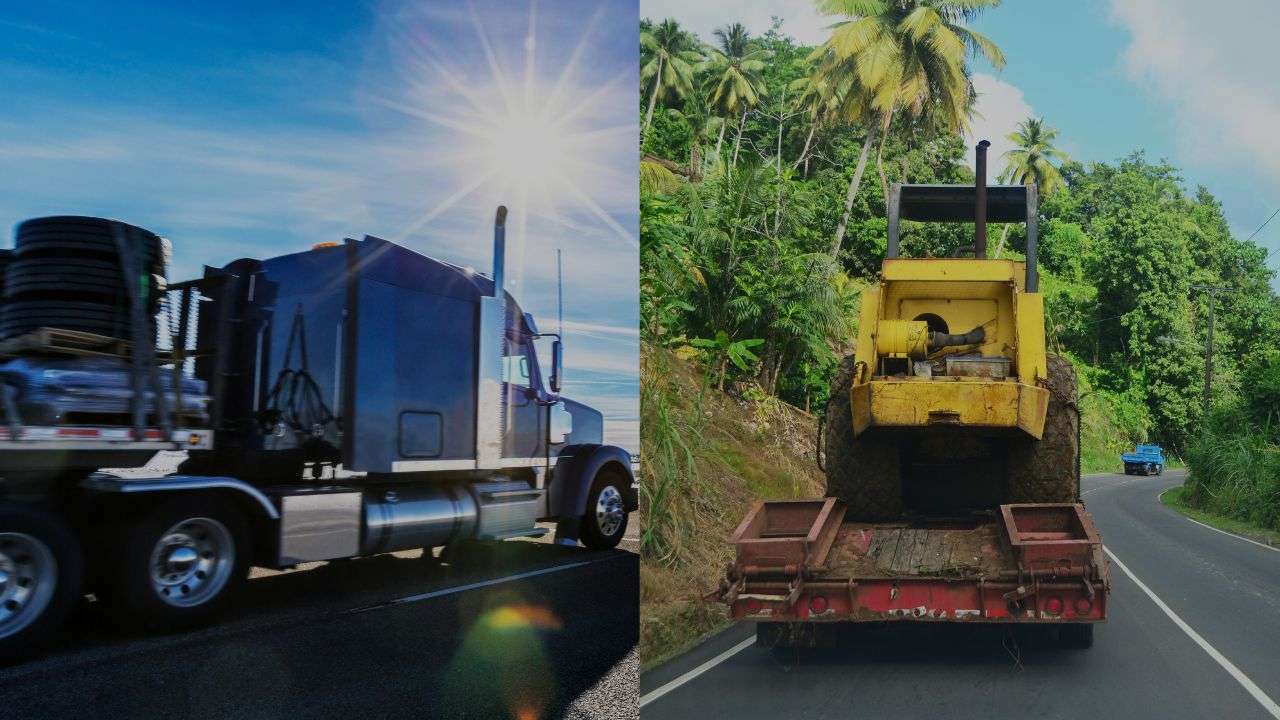
Flatbed Vs Lowboy Trailers: Size, Uses, and Tips
What Is A Flatbed Trailer?
This is a truck trailer and scanner with a flat surface, and there are no sides and roof. It is designed for easy loading and unloading. It is commonly used for oversized, irregularly shaped and heavy loads that can not fit in enclosed trailers, such as construction and manufacturing materials. Flatbeds are loaded from the sides, top, or rear using cranes, forklifts, or ramps, making them highly flexible for different types of freight.
Common Size or Dimensions of Flatbed Trailer:
We will mention here some common sizes of flatbed trailers.
Height: Typical height of a flatbed trailer is 13.5 feet maximum ( Including the trailer)
Length: 48 to 53 feet (standard), or shorter options like 40 feet.
Width: 8.5 feet (standard legal width in the U.S.).
Usage of Flatbed Trailers:
Usually flatbed trailers are preferred for transporting, and can easily transport construction materials, Like steel beams, lumber, pipes. Other Than it can be used for transport heavy machinery like RV, tractors and bulldozers. Also can be used to transport oversize items like wind turbine blades, prefabricated structures, vehicles and equipment.
How Do We Use The Flatbed Trailer? Some Tips for safe operation:
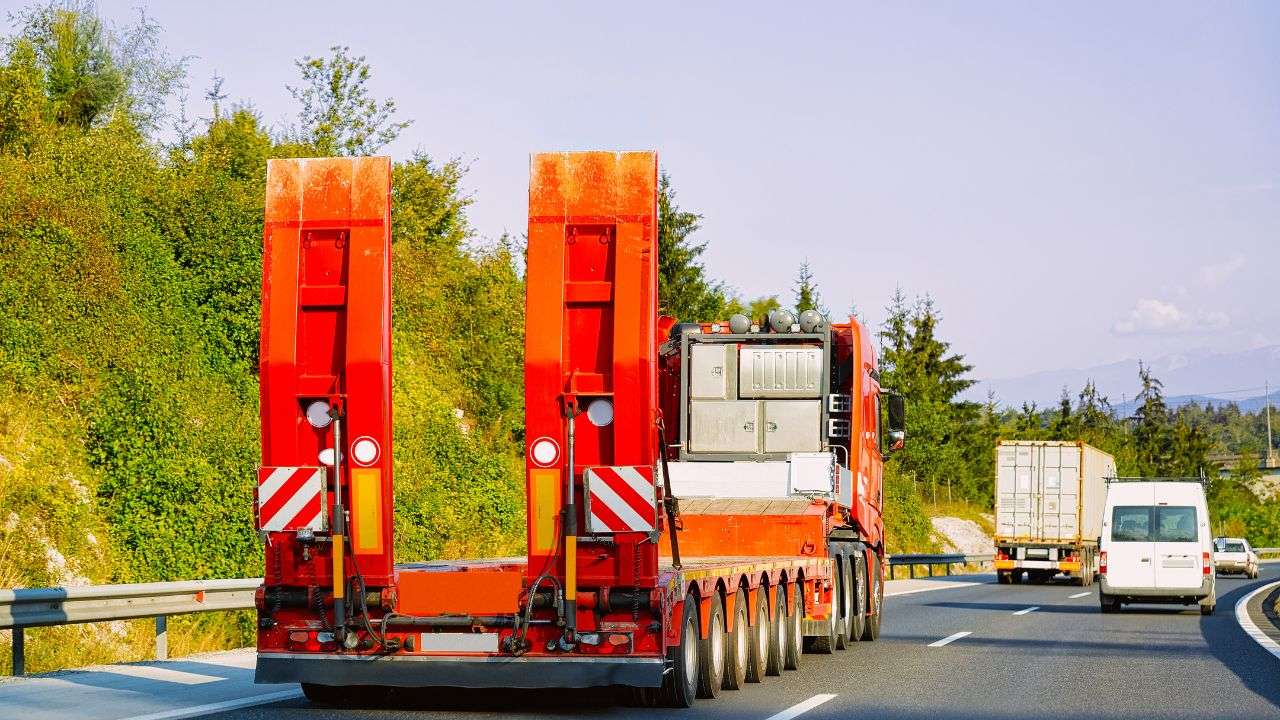
Secure the Load Properly:
Protection or security items are essential for flatbed trailer, use straps, chains, and tarps to ensure cargo is tightly secured and protected from weather or road vibrations
Weight and Height:
We should be careful about height and width, both should be according to legal size limits
Center of Gravity:
Make sure that all load is distributed evenly, to maintain a low center of gravity, which is crucial for stability during transportation.
Inspect The Trailer Before Each Trip:
Regular inspection is necessary to check the trailer for wear and tear, especially the deck and tie-down points before each trip.
Use Edge Protectors:
Use edge protectors for both the cargo and straps on sharp corners to protect the heavy vehicles or equipment from damage during the transporting journey.
If we follow all precautions, then we can say flatbed trailers are a reliable and efficient solution for transporting large or unconventional loads, offering flexibility and ease of access.
What Is A Lowboy Trailer?
It is also a type of a flatbed trailer, and it is designed to transport heavy or oversized loads, such as construction equipment, machinery, or large vehicles. It features a drop-deck design, which lowers the deck height by positioning it between the wheels or using a hydraulic system to create a low center of gravity. This design allows the trailer to carry taller loads while staying within legal height limits for road transportation.
Common Size or Dimensions of Lowboy Trailer:
We will mention here some common sizes of lowboy trailers.
Height: 18-24 inches (deck height), 12-14 feet ( freight height).
Length: 24 – 29.6 feet (standard).
Width: 8.5 feet (standard width of lowboy trailer in the U.S.).
Usage of Lowboy Trailer:
Heavy and oversized types of equipment, which can not transport through flatbed trailers, there we use lowboy trailers. They are widely utilized in industries such as construction (for cranes, bulldozers, and excavators), mining (for drilling rigs and large loaders), agriculture (for combines and tractors), and energy (for wind turbine components and oil rig equipment). Their drop-deck design and low center of gravity make them ideal for safely hauling tall or heavy loads while complying with road regulations.
How Do We Use Lowboy Trailer? Some Tips for safe operation:
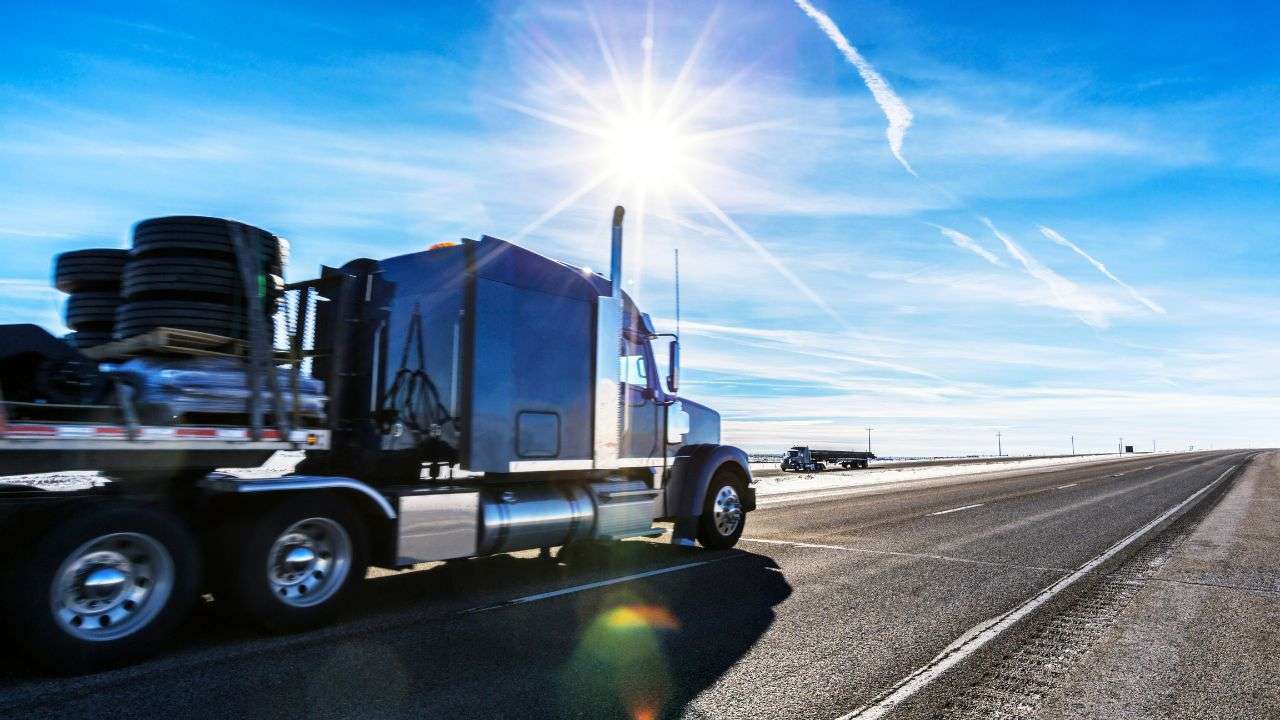
As we discussed, the lowboy trailer is necessary for heavy and oversized transport. But we have to be careful about its precautions with proper knowledge and preparation.
Weight and Dimensions:
We have to be careful about the weight, height, width, and length of the cargo to ensure it fits on the lowboy and complies with road rules and regulations.
Center of Gravity:
All loads distribute evenly, to maintain a low center of gravity, which is critical for stability during transport.
Inspection of the Trailer required Before Use:
Check the Deck and ensure the deck is clean, free of debris, and in good condition to prevent slipping or damage of the cargo.
Hydraulic Systems:
Hydraulic ramps should be checked to ensure they function properly for loading and unloading, and inspect tie-down Points to ensure they are secure and capable of handling the load.
Secure the Load Properly:
Use Heavy-Duty Straps and Chains: Secure the cargo tightly to prevent shifting during transit.
Edge Protectors:
Use edge protectors on sharp corners to avoid damaging straps or the cargo, and cover the load with tarps to protect it from weather or debris.
Other than following loading and unloading best practices and using ramps or cranes to load heavy machinery. If the lowboy has a hydraulic system, lower the deck to make loading easier and safer. Drive slowly and move the equipment slowly and carefully to avoid accidents.
FAQs:
What are the use of magnets on a Lowboy Trailer?
Magnets are used on a lowboy trailer to secure metal objects, tools, or equipment during transportation. Its work is help to keep small metallic items from shifting or falling off while the trailer is in motion, and when moving oversize load, magnetic lights or sensors may also be used for safety and visibility.
Can a Lowboy Trailer Carry a Flatbed’s Cargo?
In some special circumstances, a lowboy trailer can carry a flatbed’s cargo, it depends on the load’s size, weight, and height. But it should be clear in our mind that lowboys are designed for heavy and tall equipment that wouldn’t fit on a standard flatbed due to height restrictions. If your cargo distance is not too long, a lowboy trailer can transport it.
Summary:
Flatbed and lowboy trailers both have their own strengths, but here it depends on the type of load you need to transport. Flatbeds are usually used for general freight, offering easy loading and versatility, While we talk about lowboy trailers, which are specially designed for heavy hauling and tall equipments, that wouldn’t fit on a flatbed trailer. Choosing the right trailer comes down to your cargo’s size, weight, and transportation needs. By understanding their differences, you can make a smart decision and ensure safe, efficient hauling.

John Furbush
Author & Owner of 2 J's Auto Transport
- Phone:+1 877-325-7288
- Email:jfurbush@2jsautotransport.com
2J's Auto Transport Car Shipping Service
Are you Looking for a fast, trusted, insured, affordable and reliable Car shipping company? Don’t worry! just Contact 2J’s Auto Transport for a free quote and let us take the stress out of your auto transport experience!

